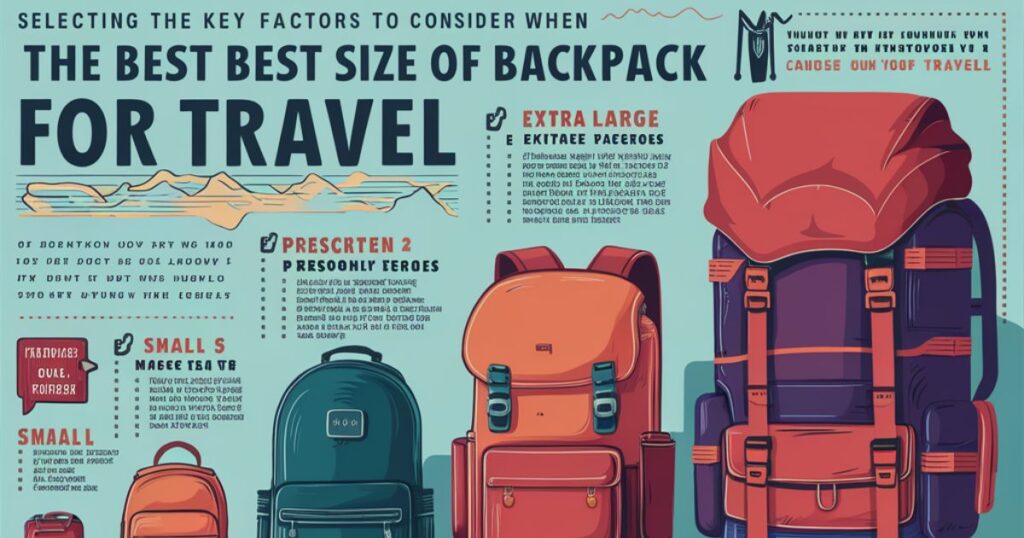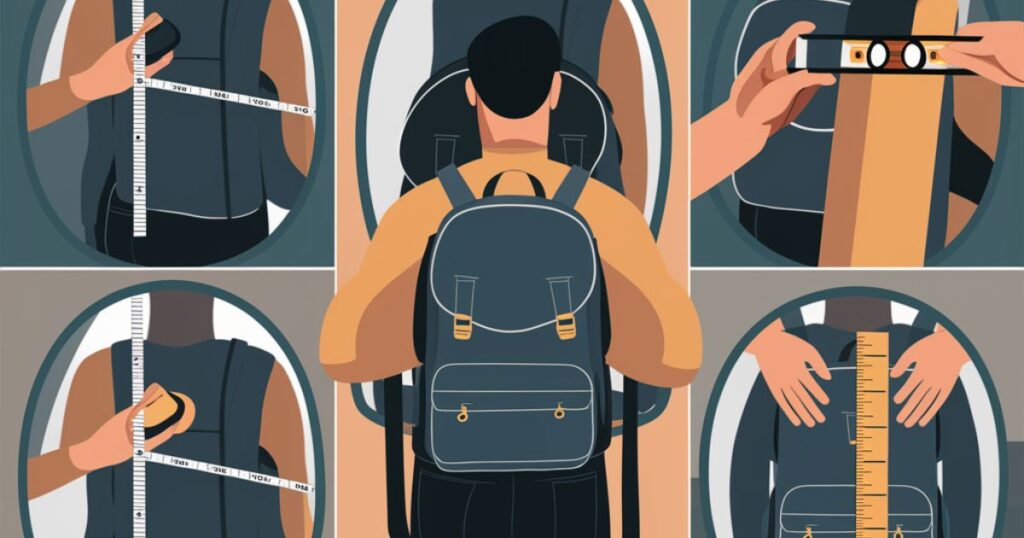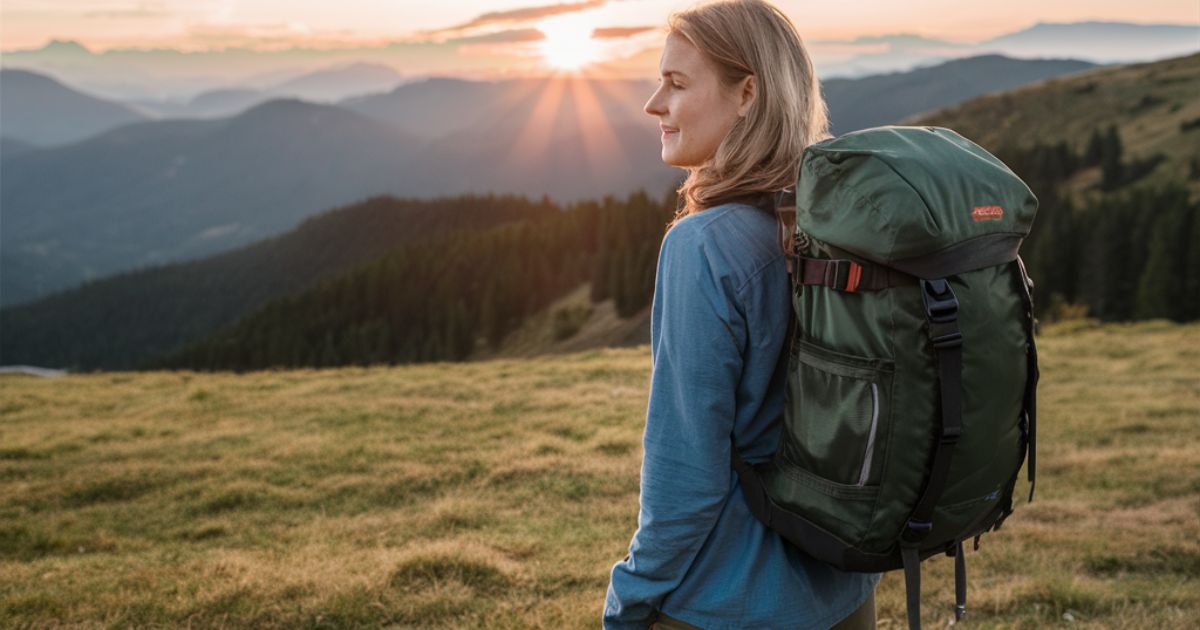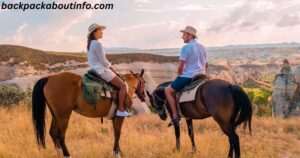When it comes to travel, having the right backpack size can make or break your trip. Too small, and you’ll be constantly struggling to fit everything.
Too large, and you’ll be hauling around an unnecessarily heavy load that’s cumbersome and strains your back.
Finding that Goldilocks “just right” backpack capacity is crucial for comfort, convenience, and an enjoyable journey free of packing headaches.
Backpack Size Guidelines
As a general rule, most travelers will want a backpack in the 30-50 liter range. However, the ideal size depends on multiple factors like trip duration, travel style, gender, and the bulkiness of your gear. Here’s a quick overview of typical backpack sizes and their common uses:
- 20-30 liters: Ideal for day hikes, short weekend trips
- 30-40 liters: Great for travel up to 1-2 weeks
- 40-50 liters: Sweet spot for 2-4 week vacations
- 50-65 liters: Recommended for extended travel of a month or more
- 65+ liters: Only needed for expeditions with lots of specialized gear
Key Factors When Selecting the Right Size

Before settling on a backpack size, it’s crucial to evaluate the factors that can influence how much capacity you truly need for your specific trip:
Length of Trip
This is probably the biggest determining factor. The longer you’ll be traveling, the more capacity you’ll likely need to accommodate clothing, toiletries, and gear for the duration.
For weekend getaways, a compact 20-30L pack may suffice since you can pack light for just a couple days. If you’re gone for a couple weeks, aim for 30-40 liters to prevent overstuffing. Trips lasting a month or more typically call for a 50L bag or larger.
Travel Style
How you’ll be experiencing your destination impacts your packing needs. Are you a minimalist crashing in hostels with just a few essentials? Or glamping in hotels and wanting room for extras?
If you’re staying in Airbnbs, camping, or going hut-to-hut, you may need to carry your entire loadout everywhere you go. In those cases, err on the larger side capacity-wise. But if you’re ok traveling with just a daypack for excursions while leaving your main bag secured, you can potentially downsize.
Gender
Many leading backpack brands offer gender-specific sizes and fits designed for typical male and female body types. Women’s packs often have slightly smaller capacities with shorter torso lengths and narrower shoulder straps compared to men’s versions.
Bulky Gear
If your trip involves cold weather, hiking, or outdoor adventures, you’ll need to factor in space for bulky items like jackets, boots, sleeping bags, etc. While you can strap some gear to the exterior, it’s better to have enough internal capacity so you can pack these items easily.
“I always struggle a bit when packing my hiking boots and other winter layers,” says adventurer Amy K. “Having adequate space in my backpack makes staying organized so much easier.”
Personal Preference
Some travelers like to pack super light with a minimalist loadout of just the bare necessities. Others prefer having a bit more room for extras like books, tech, and comfort items to enhance their journey. Adjust the size up or down accordingly based on which camp you fall into.
Best Sizes for Common Travel Scenarios
To help nail down that sweet spot capacity, here are some ideal backpack size ranges and top picks for popular travel scenarios:
Weekend and Week-Long Trips
For quick getaways from a few days to a week, you can typically get away with a compact 20-30 liter backpack—and potentially go carry-on only with just a personal item. Some great versatile options in this range:
- Osprey Daylite (13L)
- Patagonia Refugio (28L)
- Neo F Series 2 Medium Knack Bag (26L)
If you’re an ultra-minimalist traveler and efficient packer, these smaller daypacks can work even for a week or so on the road. However, most will probably want to size up in capacity for longer than a long weekend to avoid constantly doing laundry.
Longer 2-4 Week Vacations
If you’re taking a longer 2-4 week trip, you’ll likely want a backpack in the 35-45 liter range. This gives you enough space for a solid clothing rotation, basic toiletries, perhaps a small personal item or two—and even room to bring back some souvenirs, all while remaining relatively compact.
Popular picks for this mid-range capacity include:
- Osprey Farpoint 40 (40L)
- REI Ruckpack 40 (40L)
- Raul A Small Expandable Knack Pack (35L)
This size is often considered the “sweet spot” for many travelers going on longer holidays while still trying to pack reasonably light. The key is striking a balance between having everything you need without overpacking and struggling with too much weight.
Extended Travel and Backpacking
For trips lasting a month or longer on the road, most travelers will appreciate having a larger 45-65 liter backpack to accommodate extra clothing rotations, gear, souvenirs collected along the way—and anything else that accumulates during extended journeys.
Top backpacks offering ample capacity in this range include:
- Osprey Aether 60 (60L)
- Kelty Redwing 50 (50L)
- Jon C Medium Knack Pack (45L)
- Series 1 Large Expandable Knack Pack (62L)
“With a 55 liter pack, I can easily fit a few changes of clothes, my hiking gear, electronics, and still have space leftover for mementos and extras from my travels,” said long-term nomad Sara J. “Anything smaller would be way too restricting for me.”
While backpacks over 60L can get quite hefty when loaded up, the massive capacity is essential for some extended hiking, camping excursions, RTW gap year trips, or adventures where you need to bring more specialized bulky equipment.
However, for the average tourism involving mostly city travel, hotels/hostels, and flitting from place to place, most people will be plenty comfortable with a pack in the 45-55L range. Much beyond that simply becomes unnecessary bulk leading to excess weight and back strain.
Specialty Travel: Business, Ultralight, and Family Trips
On the other end of the spectrum from extended backpacking are shorter business trips where you may want to go ultra-light and minimize your load to just the essentials. For these, most road warriors rely on compact 20-30L packs like:
- Tortuga Setout (25L)
- Nomatic Travel Pack (20L)
- Knack Pack Series 1 20L Bundle
These smaller daypacks allow business travelers to pack suits, shirts, laptop, and just what they need—all carry-on sized for breezier airport mobility.
For ultralight hikers and minimalist nomads counting every ounce, some go even smaller with 12-18L frameless packs like the Gossamer Gear Gorilla and Six Moon Designs packs. But for most “one bagging it” internationally, 25-35L is typically better for versatility.
Families traveling together face some unique challenges when it comes to finding appropriately sized bags for the whole crew. For kids, some great compact youth backpack options are:
- REI Co-op Tarn (18L)
- Deuter Junior (18L)
- Osprey Ace Kids Backpacks (30L size)
Parents may opt for larger 60L+ backpacks to fit everyone’s clothing and gear. Or they can split the load between smaller bag combos, like his/hers packs in the 40L range plus smaller kids’ daypacks.
Read this Post: The Comprehensive Guide to Backpack Sizes and Liters
Sizing and Properly Fitting Your Backpack

Even with the right target capacity selected, an ill-fitting backpack can quickly lead to discomfort, back strain, injury, and misery if worn for extended periods. Proper sizing and adjustment are crucial! Follow these tips:
Measure Torso Length
Most quality backpack brands provide specific sizing recommendations based on your torso measurement, not just your overall height. Properly measure your torso length before buying to ensure a customized fit.
To measure your torso, tilt your head forward to find the prominent bony bump at the base of your neck. Then run a string or fabric tape measure from there down your back’s curvature until it hits the spot level with the top of your hipbones.
This is your torso length, which most pack brands provide a range for (e.g. 17-19 inches for a small/medium pack).
Adjust Straps/Belts
Once you have the right torso size, fine-tune the fit by adjusting the compression straps, load lifters, sternum strap, and hipbelt (which should sit directly on your iliac crests). This transfers the pack’s weight properly to your body’s core rather than all on your shoulders.
“Getting that hipbelt situated perfectly is key,” notes longtime backpacker and guide Samantha G. “It makes all the difference in how comfortable you’ll be hauling a heavy load over long distances.”
Consider Gender Sizing
As mentioned, most mainstream pack makers offer gender-specific sizing with different torso lengths, shoulder widths, and curves contoured for typical male vs. female body shapes. Make sure you get the right version to avoid pain from improper fit.
Sizing Up or Down
Those who are particularly petite or have atypical dimensions compared to standard sizes may want to size their torso length up or down an inch or two from the normal suggestions for the best individualized fit.
Get a Professional Fitting
If at all possible, get fitted at a knowledgeable outdoor retailer by trained staff. They can analyze your body measurements and shape, have you try on loaded packs, and ensure you get the perfect capacity and fit tailored just for you. This type of customized in-person fitting takes the guesswork out.
Break It In
Like hiking boots, don’t wait until you’re on the road to start wearing your new backpack. Break it in gradually around town with loaded weight to allow the suspension to mold to your body. This helps prevent painful hot spots once you’re miles from civilization.
Loading Up: Weight Distribution and Packing Tips
Beyond just capacity, how you load and distribute weight inside your backpack is key for a comfortable carry. Follow this basic pack anatomy for ideal weight distribution:
- Bottom Compartment: This area near your lower back should contain the heaviest items like shoes, dense clothing, and sleep system.
- Main Compartment: Fill this with lighter, bulkier items like your clothes and toiletries. Keep heavier items closest to your back.
- Top Lid/Brain: Only put low weight items here that you may need quick access to like snacks and accessories.
- Hip Belt Pockets: Use these for very small items you’ll need at the ready like sunscreen, phones, etc. Don’t overload.
The goal is to keep the densest weight close to your body’s core to prevent excessive sway and strain on your back. Load up heavy items from the bottom up.
Additional tips for easier packing:
- Use packing cubes/sacks to organize apparel
- Pack clothes tightly without air pockets
- Stuff socks into dead space like shoes
- Keep frequently accessed items towards the top
- Attach bulky gear externally with compression straps
- Pack a light rain cover to protect contents
By striking that ideal balance between properly sized capacity and optimal load distribution tailored to your body type, you’ll be set to tread comfortably mile after mile on your journey!
The Bottom Line on Finding Your Backpack Sweet Spot
At the end of the day, there’s no definitive universal “best” backpack size that works for every single traveler in every scenario. The ideal capacity depends heavily on the specifics of your trip length, travel style, gender, any specialty gear needs, and simply personal preferences on how much you want to haul.
However, by carefully considering those key factors, reviewing backpack capacity guidelines, trying on packs in-person, and getting professionally fitted, you can take the guesswork out of selecting that just-right backpack size—your personal Goldilocks sweet spot.
With some diligent planning, packing smarts, and the perfectly sized pack by your side, you’ll be ready to comfortably hit the road and focus on what really matters – making unforgettable memories on your adventures! So get out there, see the world, and don’t forget to pack an awesome @KnackBags #KnackPack!











